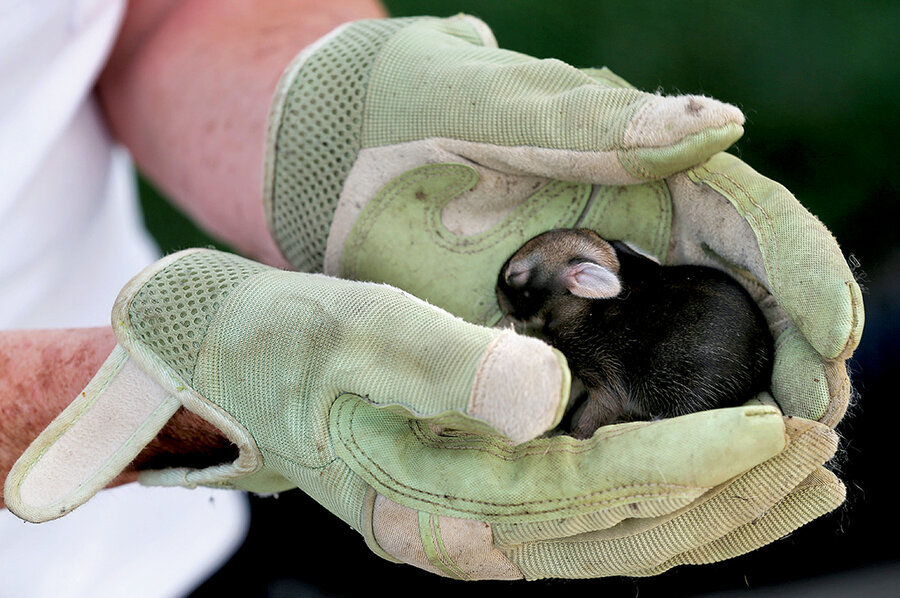When should you help a wild animal?
It’s common to find baby animals in your garden or backyard when wildlife are raising young. But unless the babies are injured or in distress, it’s best to leave them alone. Wild animals are good parents and don’t abandon their young, but they do leave them alone for long periods as they hunt for food.
People often misinterpret normal wildlife behavior and may disturb or stress animals by trying to “rescue” them.
What are the signs that an animal needs help? When it:
•Has a wound or broken bone.
•Is a featherless or nearly featherless bird on the ground.
•Has been brought to you by a cat or dog.
•Is shivering or crying.
•Has a dead parent nearby.
•Is out of its den, burrow, or nest and looks weak or sickly.
Unless one of these signs is evident, leave the animal alone. If it does need help, start with your state’s Department of Natural Resources website and look for a listing of licensed wildlife rehabilitators. If none is near you, call your local or emergency veterinary clinic, humane society, animal control office, or police department for help.
Birds: An uninjured featherless or nearly featherless baby bird (nestling) on the ground should be put back in its nest if possible. If you can’t reach the nest, hang a shallow basket with drain holes, protected from the elements, close to the original nest, and put the bird in it. Observe the baby from a distance for an hour or so. If its parents do not return, the youngster needs help.
If you find a young bird that is fully feathered (a fledgling) sitting or hopping about on the ground, unable to fly, leave it be. It’s learning to fly. These young birds are fully supervised and fed by their parents until they get the hang of flight.
Mammals: Many cottontails living in backyards are used to people and may sit, unmoving, for long periods. Sick or injured rabbits might lie on their sides, fall over, or tilt their heads.
Rabbits nest from March through September and may have four litters a year. If you find a rabbit’s nest containing fully furred babies with open eyes that look plump and healthy, leave them alone. Mother rabbits feed their young only at dusk and dawn. If the nest looks abandoned, put a few strands of string over it. If the string is there the next day, the babies need help.
Squirrels nest twice each year, in early spring and late summer. If you find a baby squirrel with a full and fluffy tail that is able to run, jump, and climb, leave it alone. But if a youngster has fallen out of the nest, place it in a basket or box. Hang the basket or box as far up the tree trunk as possible and close to the nest. Mother squirrels will “rescue” a stray baby. If after a few hours the baby has not been retrieved, it needs help.
Most orphaned babies (squirrels, opossums, raccoons) are found looking for food near a dead mother. They may not survive without help. Again, start by calling the experts.
Fox kits are often unsupervised for long periods of time while their parents hunt for food. If they seem energetic and healthy, leave them be. If they appear sickly or weak, or if you have reason to believe both parents are dead, get professional help.
Do not try to rescue baby skunks or bats, as they may be rabid. Mother raccoons don’t let their babies out of their sight, so a baby raccoon that has been alone for more than a couple of hours is probably an orphan.
Never try to capture an adult animal that is sick or injured. To them, you are a threat and they will bite.






